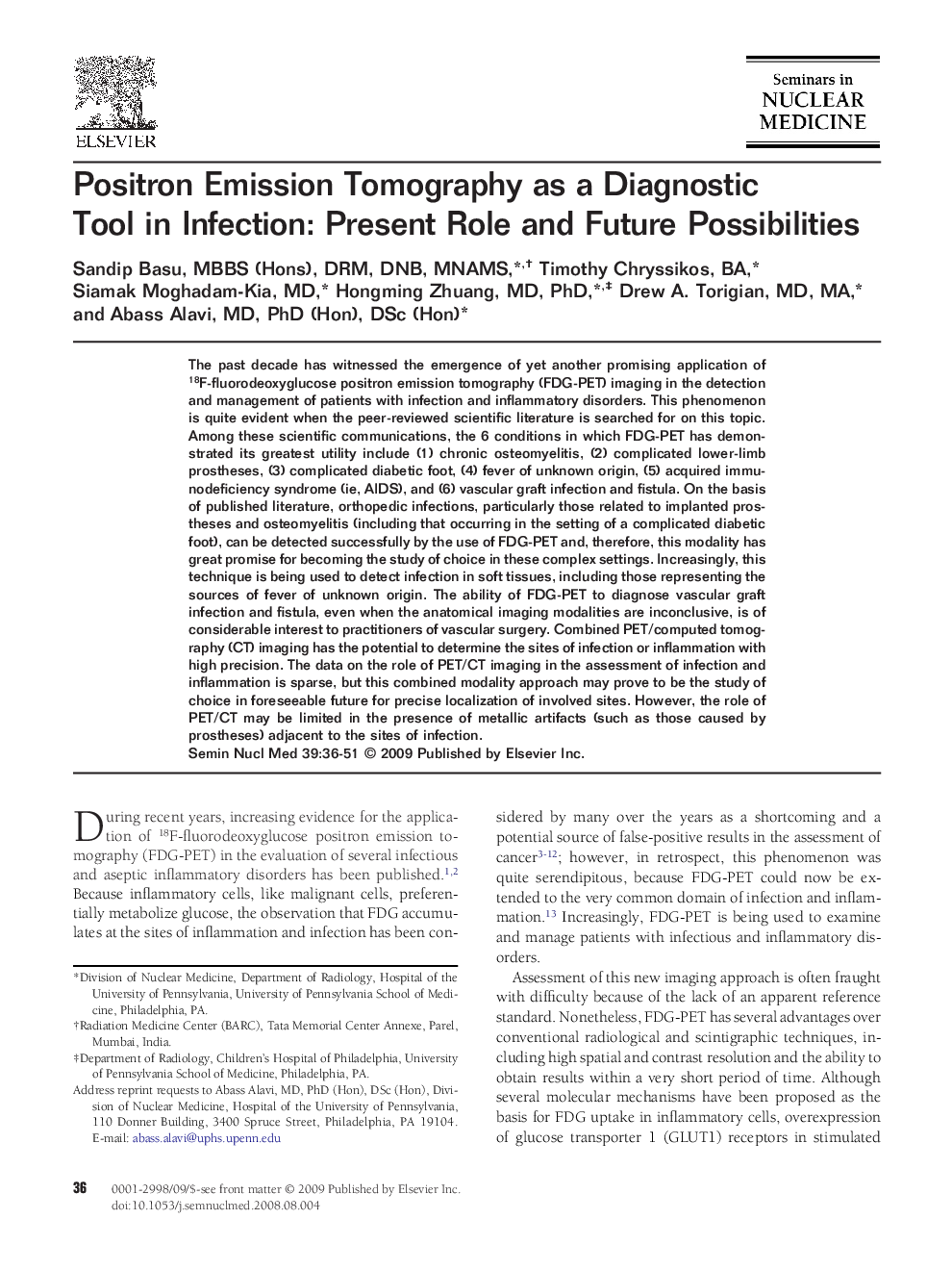| کد مقاله | کد نشریه | سال انتشار | مقاله انگلیسی | نسخه تمام متن |
|---|---|---|---|---|
| 4251400 | 1284014 | 2009 | 16 صفحه PDF | دانلود رایگان |

The past decade has witnessed the emergence of yet another promising application of 18F-fluorodeoxyglucose positron emission tomography (FDG-PET) imaging in the detection and management of patients with infection and inflammatory disorders. This phenomenon is quite evident when the peer-reviewed scientific literature is searched for on this topic. Among these scientific communications, the 6 conditions in which FDG-PET has demonstrated its greatest utility include (1) chronic osteomyelitis, (2) complicated lower-limb prostheses, (3) complicated diabetic foot, (4) fever of unknown origin, (5) acquired immunodeficiency syndrome (ie, AIDS), and (6) vascular graft infection and fistula. On the basis of published literature, orthopedic infections, particularly those related to implanted prostheses and osteomyelitis (including that occurring in the setting of a complicated diabetic foot), can be detected successfully by the use of FDG-PET and, therefore, this modality has great promise for becoming the study of choice in these complex settings. Increasingly, this technique is being used to detect infection in soft tissues, including those representing the sources of fever of unknown origin. The ability of FDG-PET to diagnose vascular graft infection and fistula, even when the anatomical imaging modalities are inconclusive, is of considerable interest to practitioners of vascular surgery. Combined PET/computed tomography (CT) imaging has the potential to determine the sites of infection or inflammation with high precision. The data on the role of PET/CT imaging in the assessment of infection and inflammation is sparse, but this combined modality approach may prove to be the study of choice in foreseeable future for precise localization of involved sites. However, the role of PET/CT may be limited in the presence of metallic artifacts (such as those caused by prostheses) adjacent to the sites of infection.
Journal: Seminars in Nuclear Medicine - Volume 39, Issue 1, January 2009, Pages 36–51